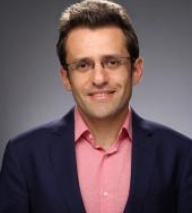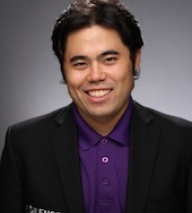2013 Sinquefield Cup Player Bios
Magnus Carlsen
Norwegian Grandmaster Sven Magnus Carlsen is perhaps the most recognizable chess figure on the earth today. With a FIDE rating of 2862, he is the current No. 1 in the world, a rank he has held for more than two years. Only 22 years old, Carlsen has experienced one of the fastest ascents to the elite stratosphere of chess, the pinnacle of which may be realized this November when he challenges World Champion Viswanathan Anand for the world title.
Carlsen obtained his first IM norm in January 2003 and officially earned the title in August, still 12 years old. He earned his first GM norm by winning the Corus Chess Tournament in January 2004 and was eventually awarded the grandmaster title by that April, making him the second youngest in history at 13 years, 148 days.
In 2005, he became the youngest to appear in the Candidates Tournament, his first of three appearances in the event. In early 2008, Carlsen made his first move into the world’s top-5 – where he has remained since – and in November 2009, he broke the 2800 rating barrier, only the fifth ever and the youngest to do so. FIDE’s first rating list of 2010 named Carlsen the world’s No. 1, making him the youngest to ever hold the rank at 19 years and 32 days.
This year is shaping up to become one of Carlsen’s biggest – if only for the potential prize at the end. In January, FIDE showed Carlsen to have passed Garry Kasparov’s rating record of 2851, which had held for nearly 14 years. Carlsen set the new record with a peak of 2872 in February. He took first at the Tata Steel Chess Tournament for the third time, besting second-place Levon Aronian by 1.5 points, and took second in both the Norway Tournament and the Tal Memorial. Most importantly, Carlsen won the 2013 Candidate’s Tournament in March, earning the right to play for the World Champion title in Chennai, India, just over a month after his stay in Saint Louis.
Famous Washington Post columnist Lubomir Kavalek dubbed Carlsen the “Mozart of Chess” when he was just 14, a moniker that has since become entrenched by a recent CBS 60 Minutes interview. In 2012, Carlsen reportedly earned US $1.2 million, more than 60% of which came from sponsorship. This year, TIME Magazine named Carlsen one of the 100 Most Influential People in the World.
He is known for an endgame prowess amongst the greatest in history, as well as an unusually wide range of openings, which frustrates his opponents in their preparation against him. For his Sinquefield Cup matchups, the only player he does not have a career winning record against is Gata Kamsky, who has bested Carlsen 2-1 with six draws. Carlsen has never lost to Hikaru Nakamura, winning seven times and drawing 13. He holds the lengthy series between Aronian at 7-4 with 24 draws.
Levon Aronian
Grandmaster Levon Aronian is the pride of chess-strong Armenia, having been declared Sportsman of the Year twice, Honored Master of Sport in 2009 and, most recently, selected as the 2012 Person of the Year by a leading Armenian magazine. The 30-year-old is just the sixth player in history to cross the elite 2800 threshold, currently ranking No. 2 in the world at 2802. Aronian has remained in the world’s top-3 since November 2010 and has only twice slipped out of the top-10 since July 2005.
Taught to move the pieces at 9 years old, Aronian was quick to appear on the world stage, winning the 1994 World Youth Chess Championship U12. In 2002, at 20, he won the Armenian Championship and later the World Junior Championship in India. But his mainstay in the world’s elite was marked in 2005, when he won the World Cup in Russia and cracked the world’s top 10 for the first time. Since then, Aronian has collected a staggering amount of elite titles.
He played the first board on three gold-medalist Armenian Chess Olympiad teams (2006, 2008 and 2012), also grabbing the individual gold in 2012. He has won the prestigious Tal Memorial and Corus/Tata Steel Chess Tournament three times each, and the FIDE Grand Prix twice. In 2009, he won the World Rapid Championship – a title that was taken from him the following year by Gata Kamsky – and in 2010 Aronian won the World Blitz Championship – a title that he took from defending champion Magnus Carlsen.
Aronian is also a talented chess variant player, becoming the Chess960 World Champion in 2006. He successfully defended the title to Viswanathan Anand in 2007, though lost it in 2009 to Hikaru Nakamura.
His play in 2013 leading up to the Sinquefield Cup has been representative of his elite status. A second place finish in the Tata Steel (behind Carlsen), a fourth place finish in the 2013 Candidates Tournament – his second appearance in the event – and a win at the Alekhine Memorial Tournament. Perhaps showing a bit of his human side, however, Aronian was surprisingly upset in the third round of the 2013 Chess World Cup in August, despite being the top seed.
In his career against Kamsky, Aronian is 5-1 with 2 draws; against Nakamura, Aronian is 5-3 with 7 draws. By far, his most familiar Sinquefield Cup opponent is Carlsen, with whom he has met for 35 classical games – Carlsen holds the series 7-4, with 24 draws.
Hikaru Nakamura
Grandmaster Hikaru Nakamura is the United States’ No. 1 chess player and the leading hopeful to bring America its first World Championship since Bobby Fischer. Born in Hirakata, Osaka Prefecture, Japan, the 25-year-old is now one of the world’s elite, currently ranked seventh on the planet with a FIDE rating of 2774.
A child prodigy in every sense of the word, Nakamura made a fast impact on United States chess by knocking down nearly every age record on his way to the top. Nakamura was at one time the youngest-ever American master in history (10 years, 79 days), the youngest American international master (13 years, 2 months) and eventually the youngest American grandmaster (15 years, 79 days) – breaking Fischer’s record by three months.
Nakamura has collected numerous titles and championships over the past decade-plus, first splashing onto the scene as the 2001 U.S. Junior Champion at 13 years old. He was on his way to becoming a prominent figure on the scene by 2004, shocking the world with a sweet sixteen appearance in the FIDE World Cup, and then grabbing his first of three U.S. Championships the following year.
He is a recipient of the prestigious Samford Chess Fellowship (2005), the 2007 National Open champion, and a three-time North American Open champion. He was an individual bronze medalist in the 2006 and 2008 World Olympiad, as well as the gold-medalist on the first board of the 2010 World Team Championship, where the United States placed second.
Nakamura’s first win amongst the super elite came in 2011 at the notorious Tata Steel Tournament in Wijk aan Zee, finishing clear first of defending champion Magnus Carlsen, current World Champion Viswanathan Anand, as well as Levon Aronian – a performance that Garry Kasparov touted as the best by an American since 1895. He is also a talented variant player, winning the Chess960 World Championship 2009 – a title he took from Levon Aronian – and one of the best blitz players in the world today.
Leading up to the Sinquefield Cup, Nakamura has continued his rise in strength in 2013. After winning the Biel Blitz Championship last year, he padded his blitz prowess as the Tal Memorial Blitz champion this past June – popping his FIDE blitz rating up to a career-best 2879. He surrendered defense of his 2012 U.S. Championship – a crown that has since been taken by Gata Kamsky – in lieu of the Norway Super Tournament, where he tied Carlsen for second place. Just before arriving in Saint Louis, Nakamura made a return to the sweet 16 in the 2013 FIDE World Cup.
Nakamura holds a losing record against Aronian, with three wins to five losses and seven draws; and he is tied with Kamsky with one win to one loss, with six draws. He remains winless against Carlsen, however, losing seven times in 20 games.
Gata Kamsky
Gata Kamsky is a Soviet-born, American grandmaster, currently ranked No. 2 in the United States and No. 17 in the world, with a FIDE rating of 2741. He was born in Siberia, Russia, in 1974 and learned chess at 7 years old. By 9, he had won the Under-15 USSR Championship, and then became a back-to-back Junior Champion of the Soviet Union at 13.
Kamsky emigrated to the U.S. in 1989 and earned his FIDE Grandmaster title the following year, also becoming the youngest player ever rated in the FIDE world top-ten.
Kamsky’s impact on American chess has been profound, having been the highest-rated American since his arrival in 1989 – second only now to Hikaru Nakamura. Kamsky won his first of four U.S. Championships in 1991, and the following year helped America grab its first-ever gold in the World Team Chess Olympiad.
In 1994, at age 20, Kamsky became the youngest-ever to challenge for the FIDE world title and the first American since Bobby Fischer. The 20-game match against reigning champion Anatoly Karpov was finally held in 1996, in Elista, Kalmykia, in Russia. Kamsky lost the match 7.5-10.5, but substantial political controversy surrounding the event ultimately led to an eight-year hiatus from professional chess for the American GM, partially in protest.
Kamsky returned in 2004 – “past his prime” at 30 years old – for an extraordinary second chapter in his career. By 2007, he had regained his elite form, qualifying for the Candidates Tournament that year and later winning the Chess World Cup as the 11th seed, knocking off Magnus Carlsen in the semifinals. In 2010, Kamsky won his second U.S. Championship – 19 years removed from his first title – and returned to successfully defend the crown in 2011.
Kamsky’s play in 2013 leading up to the Sinquefield Cup has been some of the finest in his career. He earned his fourth U.S. Championship title in May, then rolled hot into the fourth stage of the FIDE Grand Prix, taking second place in Thessaloniki, Greece. His FIDE rating crested at 2763 in July, the highest ever in his career. Just before arriving in Saint Louis for the Sinquefield Cup, Kamsky went deep in the Chess World Cup 2013, but was ultimately knocked out by GM Evgeny Tomashevsky in the quarterfinals.
In nine classical games versus Carlsen, Kamsky holds a 2-1 record with six draws. In eight matches against Levon Aronian, Kamsky has won only once against five losses, with two draws. Nakamura and Kamsky are tied 1-1 with 6 draws over eight career games.




